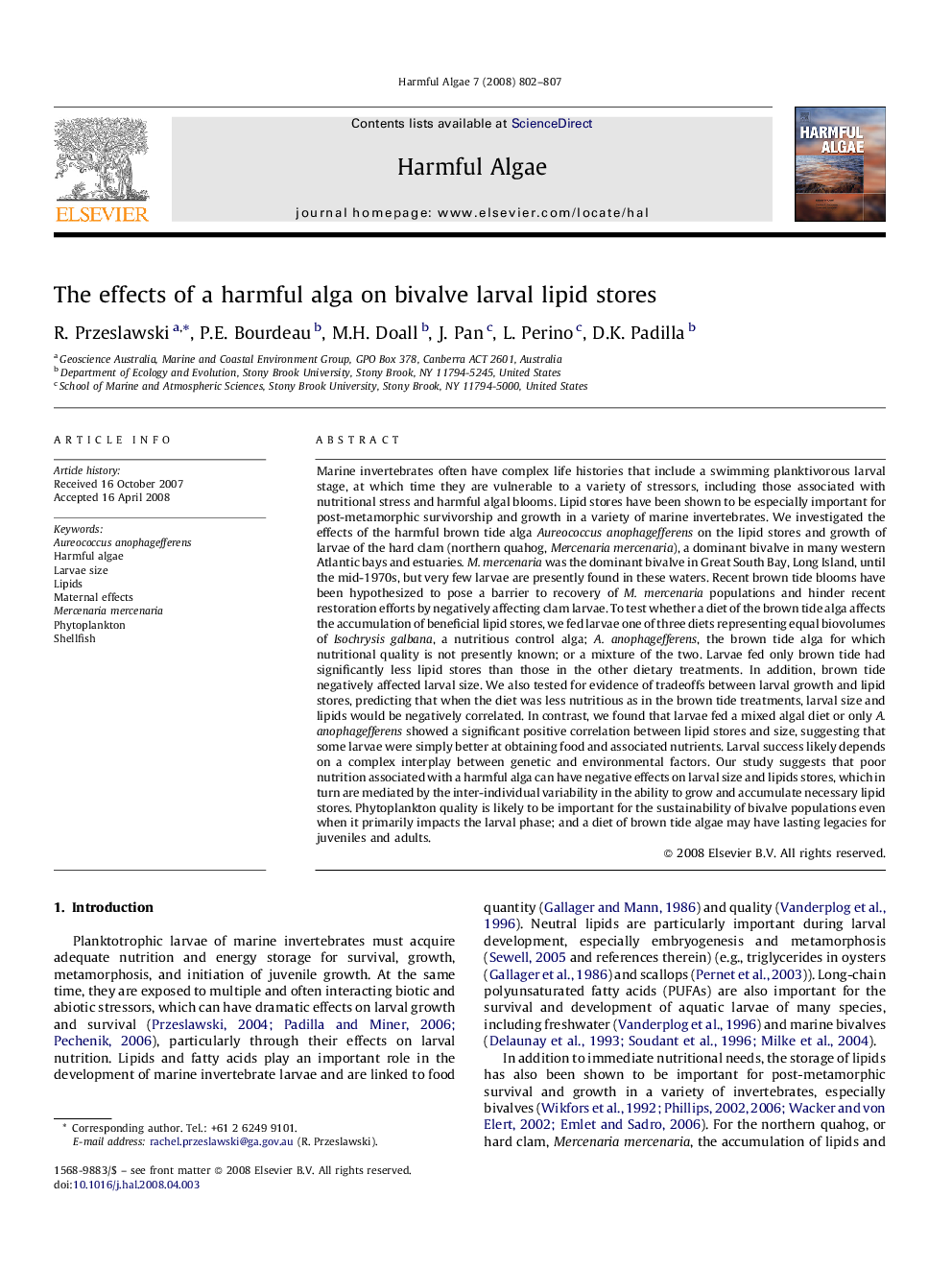| کد مقاله | کد نشریه | سال انتشار | مقاله انگلیسی | نسخه تمام متن |
|---|---|---|---|---|
| 4545983 | 1327481 | 2008 | 6 صفحه PDF | دانلود رایگان |

Marine invertebrates often have complex life histories that include a swimming planktivorous larval stage, at which time they are vulnerable to a variety of stressors, including those associated with nutritional stress and harmful algal blooms. Lipid stores have been shown to be especially important for post-metamorphic survivorship and growth in a variety of marine invertebrates. We investigated the effects of the harmful brown tide alga Aureococcus anophagefferens on the lipid stores and growth of larvae of the hard clam (northern quahog, Mercenaria mercenaria), a dominant bivalve in many western Atlantic bays and estuaries. M. mercenaria was the dominant bivalve in Great South Bay, Long Island, until the mid-1970s, but very few larvae are presently found in these waters. Recent brown tide blooms have been hypothesized to pose a barrier to recovery of M. mercenaria populations and hinder recent restoration efforts by negatively affecting clam larvae. To test whether a diet of the brown tide alga affects the accumulation of beneficial lipid stores, we fed larvae one of three diets representing equal biovolumes of Isochrysis galbana, a nutritious control alga; A. anophagefferens, the brown tide alga for which nutritional quality is not presently known; or a mixture of the two. Larvae fed only brown tide had significantly less lipid stores than those in the other dietary treatments. In addition, brown tide negatively affected larval size. We also tested for evidence of tradeoffs between larval growth and lipid stores, predicting that when the diet was less nutritious as in the brown tide treatments, larval size and lipids would be negatively correlated. In contrast, we found that larvae fed a mixed algal diet or only A. anophagefferens showed a significant positive correlation between lipid stores and size, suggesting that some larvae were simply better at obtaining food and associated nutrients. Larval success likely depends on a complex interplay between genetic and environmental factors. Our study suggests that poor nutrition associated with a harmful alga can have negative effects on larval size and lipids stores, which in turn are mediated by the inter-individual variability in the ability to grow and accumulate necessary lipid stores. Phytoplankton quality is likely to be important for the sustainability of bivalve populations even when it primarily impacts the larval phase; and a diet of brown tide algae may have lasting legacies for juveniles and adults.
Journal: Harmful Algae - Volume 7, Issue 6, October 2008, Pages 802–807